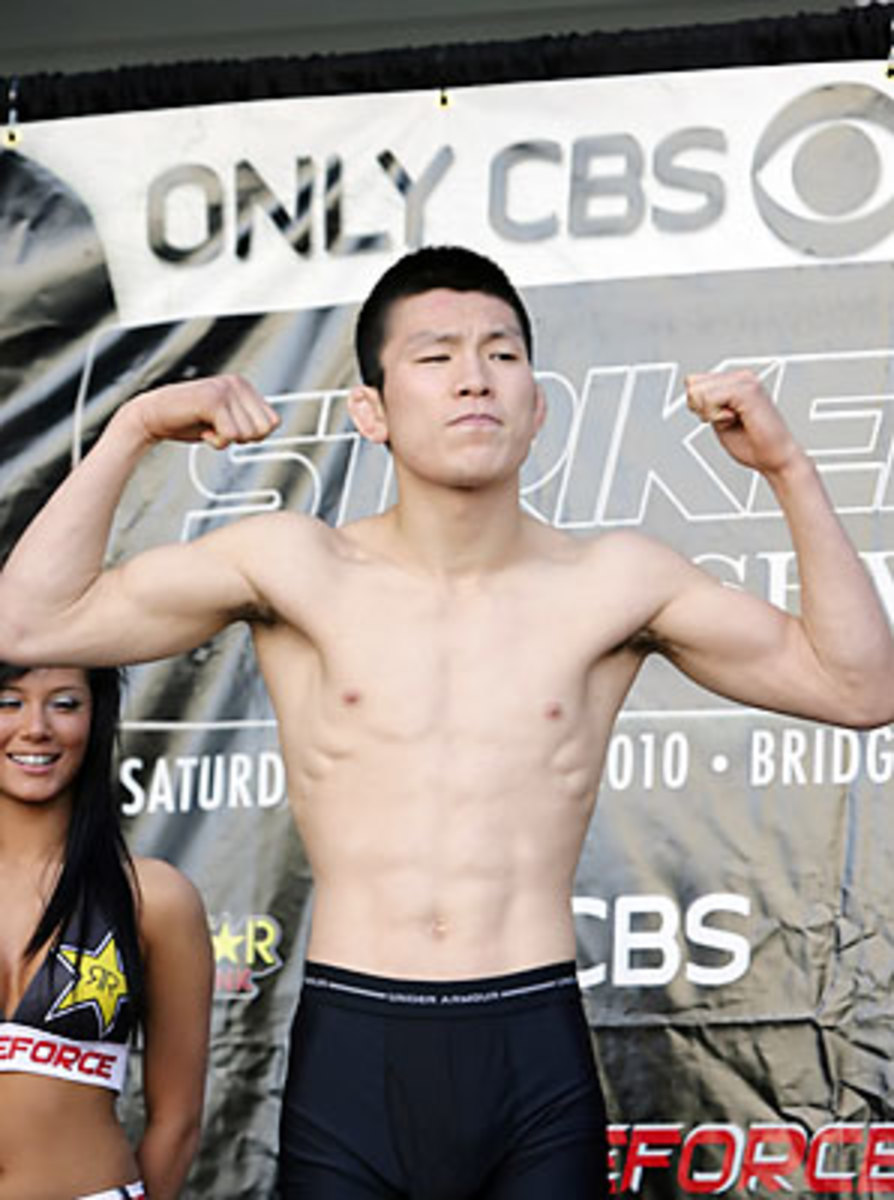Aoki-Kawajiri battle will shape Japan's future in lightweight MMA
Despite reports to the contrary, there continues to be meaningful mixed martial arts in Japan.
The last time it was worth paying attention to, of course, was April 17, when the country's top lightweight, Dream champion Shinya Aoki, failed in his Stateside debut to do anything against Gilbert Melendez. With Aoki's return to the ring slated for Saturday in Tokyo (HDNet, 3 a.m. ET/12 a.m. PT), it's appropriate once more to focus on the other side of the Pacific, in large part because of the titleholder's opponent, Tatsuya Kawajiri.
By pairing Aoki and Kawajiri, both tenuously ranked among the 10 best lightweights in the sport, Dream booked the most significant fight involving Japanese products the country can produce right now -- important considering Japan's most prominent fight promoter, FEG, must find a way to restore some measure of relevance to the Dream belt.
The trio of Aoki, Kawajiri and Takanori Gomi, who recently resurfaced in the UFC, dominated their nation's lightweight class since 2002. When Gomi stumbled and burned bridges with his promotional group two years ago, status as Japan's best lightweight was open for debate. And Aoki, with the help of Gomi's former backers, Real Entertainment, quickly became the man to fill that role.
Poised to break out with a career-defining victory in the finals of Dream's 2008 lightweight grand prix, Aoki was instead stopped during a listless effort against Norway's Joachim Hansen. The setback ended an 11-fight win streak and halted Aoki's momentum until he took the rubber match and Dream belt with an armbar over Hansen (19-10-1) the following year.
The no-frills Kawajiri, Japan's best incarnation of a strong Western-style grappling-based mixed martial artist, went from war to war since his days as Shooto 154-pound champion in the middle part of the decade, fighting everyone save Aoki. His most compelling bouts manifested in losses to Melendez (18-2) and, in the semifinals of the Dream tournament two years ago, to top-five ranked lightweight Eddie Alvarez (20-2).
While they fight under the same flag, Aoki (23-5) and Kawajiri (26-5-2) offer completely different approaches to MMA -- a contrast that should make for a particularly compelling display this weekend.
Aoki, as we know, is an improvisational submission artist; good luck finding safe harbor on the ground with the slender 27-year-old. He may have appeared passive and weak against Melendez, but that contest took place in a cage, not a four-sided ring Aoki uses so well to corner his victims. In part, he failed because he couldn't dictate movement and angles; in the expanded square footage of a cage, absent 90-degree corners, Aoki had no hope of forcing Melendez to engage. Not so Saturday.
Tactical pressure wasn't the only reason he lost in the spring. Aoki simply couldn't match Melendez's physical grappling, and in that sense Kawajiri, 32, appears to be very similar to his American counterpart (as he showed during a battle with Melendez on the last day of 2006).
Kawajiri, a fine submission grappler who prefers to take down and batter opponents -- his nickname "The Crusher" is well-earned -- walks into the fight as the better striker. He's squat, powerful, has no issue trading and knows how to sit on his punches. If Kawajiri is going to dominate, this is his best opportunity, even if he's short-armed against a long-limbed opponent. Simply put, Kawajiri is better on the inside. There are, however, inherent risks whenever Aoki has the chance to clinch. Aoki won't take a shot at a double-leg, not unless he hopes to grab hold of the challenger and pull guard. And this is where the fight's intricate battles should play out.
Who will emerge as Japan's best lightweight?
Beyond tactics and techniques, it's a question whose answer could lift a stagnating promotion, division and sporting environment. A victory for Aoki would seem, on the surface, to do nothing but affirm the status quo -- that in a global sense Japanese mixed martial artists can't hack it against Americans, Brazilians, et. al. That may or may not be fair, but it's certainly how the result would be perceived, until Aoki redeemed himself internationally.
A Kawajiri win, however, immediately engages some compelling opportunities. He's already shown himself capable of competing against strong wrestlers, and a rematch against the likes of Melendez in a cage in the U.S. would be a fight worth Strikeforce's and Dream's efforts.
I expect Kawajiri to duplicate much of what made Melendez impossible for Aoki to handle -- sprawling, brawling, steering clear of in-tight exchanges. Should the challenger keep it on the feet, and based on previous efforts against stronger wrestlers he can, Kawajiri should walk out of the ring Saturday the new Dream lightweight champion.






